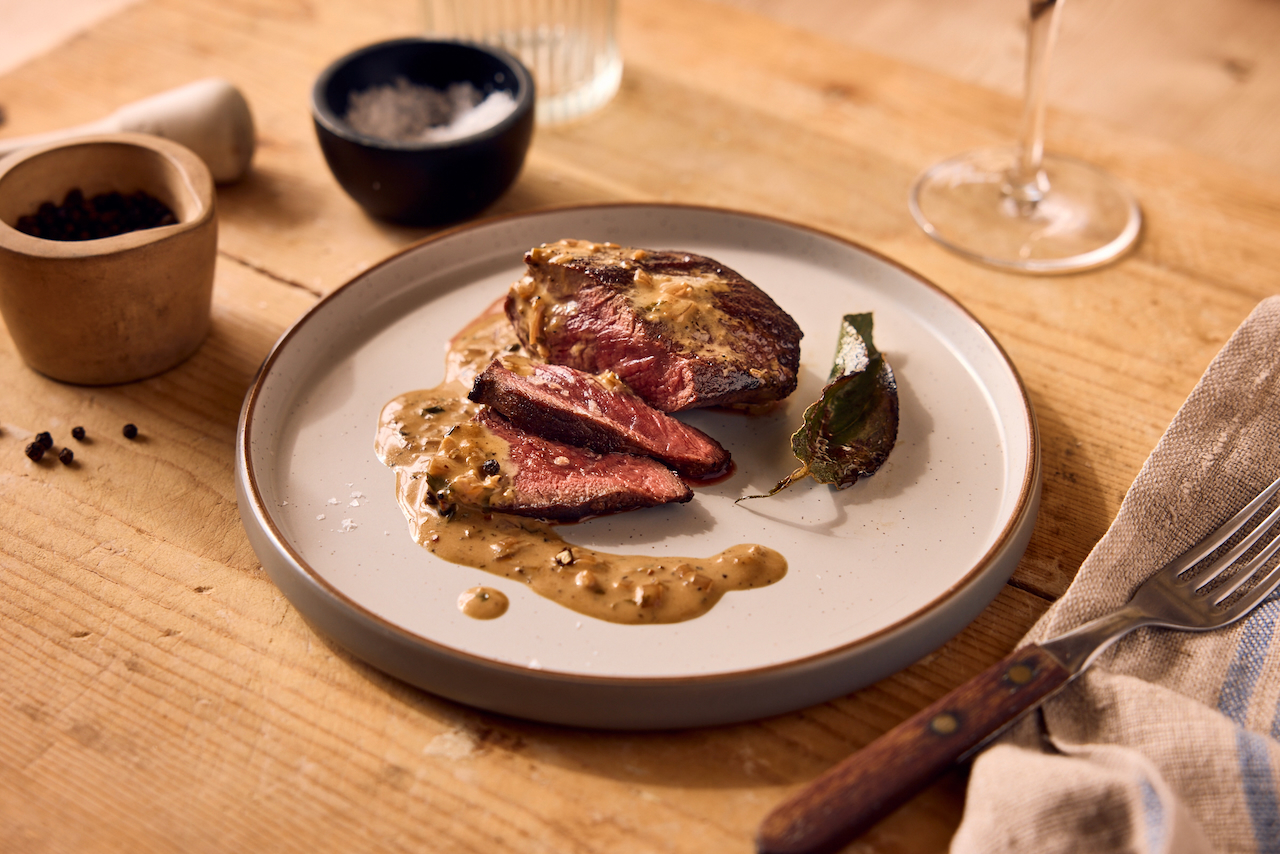First things first, you will have read before, no doubt that you must bring your steaks and some other meats to room temperature before attempting to cook them. This is very true, but it is important to understand why.
It helps to envisage a cross section of the meat you wish to cook to achieve that perfect, pink and juicy hue. Imagine first that the meat is fridge cold. Then, switch on your internal thermal imaging imagination and you will notice that the core of the meat is very dense, and that the more heat you add hotter the outside of the meat becomes, whilst the inside stays rather cold – until suddenly, you have added so much heat energy to the meat that the inside suddenly gets hot.
When the meat to be cooked is at room temperature however, the transfer of heat energy through the meat (which alters the structure of the protein) is far more smooth and controlled. This is essentially because you have less of a bump over which to drive the heat from the pan – this is further eased by the adding of fat to the pan.
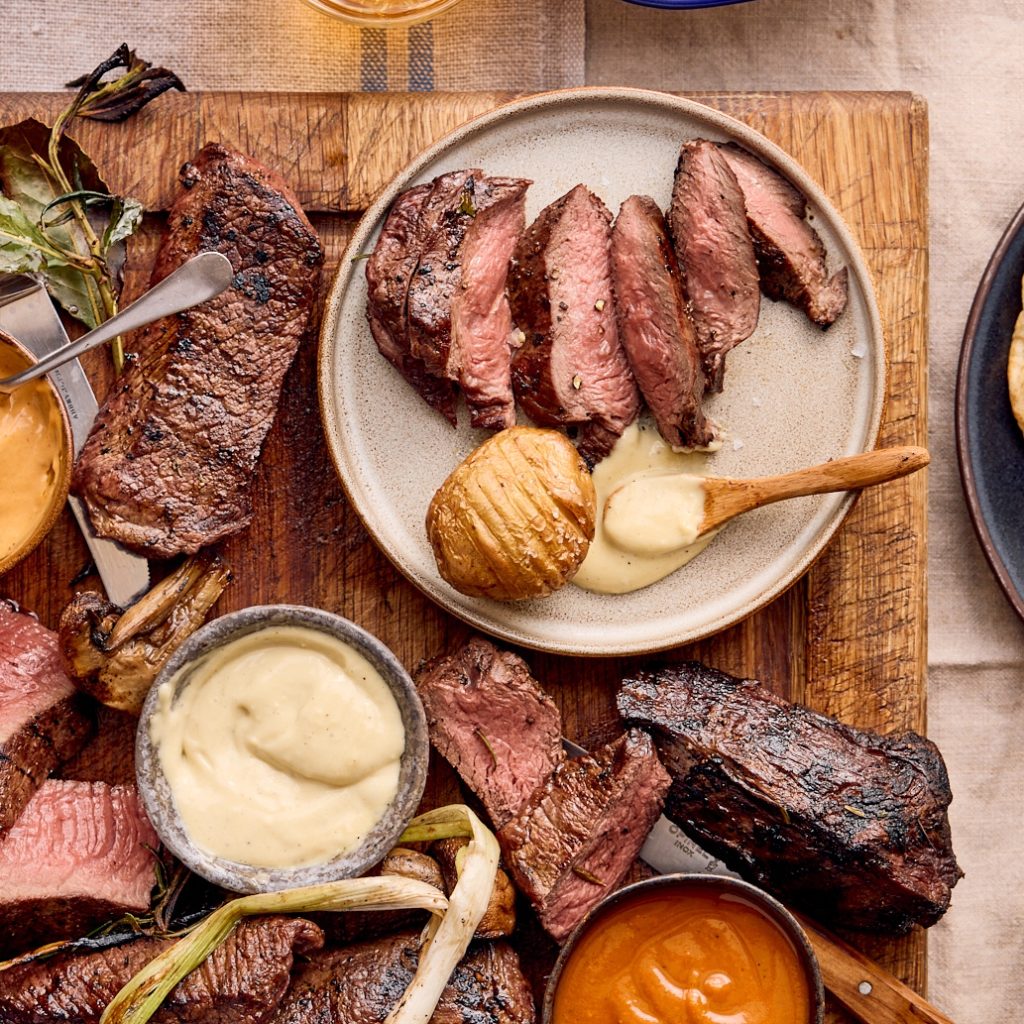
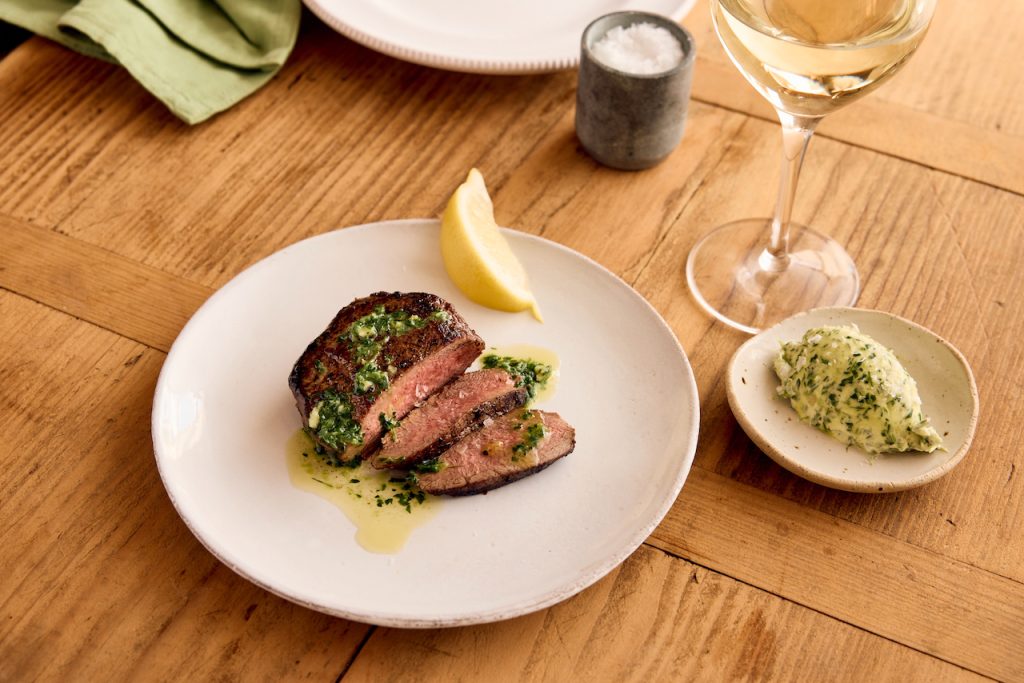
Fat is added to the pan for various reasons and the first is that you do not want your steak to stick to the pan. Far more importantly though is that the fat acts as a medium, transferring the heat of the pan into the meat more quickly and evenly than mere direct transfer can effect.
I like to use butter or lard to cook my steaks, but olive oil works very well too, as do some seed oils. If using olive oil avoid getting it too hot.
To begin: bring the steaks to room temperature, season them well with salt and pepper and put that good pan of yours onto the stove to load up with heat (another good tip – if a pan is too hot you can take it off the heat, but if a pan is not hot enough then you can struggle to ever get it to the required temperature, so give the pan a chance to heat up well on a medium heat). You are looking for control here. So just use a moderate flame or heat setting and wait, do not be tempted to try and cook your steaks on full bore. Get your other ingredients ready whilst the pan heats up perhaps.
Put half the butter in the now hot pan and allow it to melt and get to the foaming or even lightly smoking stage. Add your steaks to the pan and do not move them around. You will over time learn to assess how cooked they are by observing their relative toughness of feel compared to when you put them in. Cook them for at least 2 mins on the first side, without moving and then turn over. I would recommend that for a nice, generously cut steak that two minutes per side will be ample for medium rare. Add some fresh thyme, rosemary, bay or sage to the pan when you turn the steaks. After cooking time has elapsed (or you are happy with the feel of the meat – remember it will soften a little whilst resting as long as it is not over cooked) move the meat to a warmed plate.
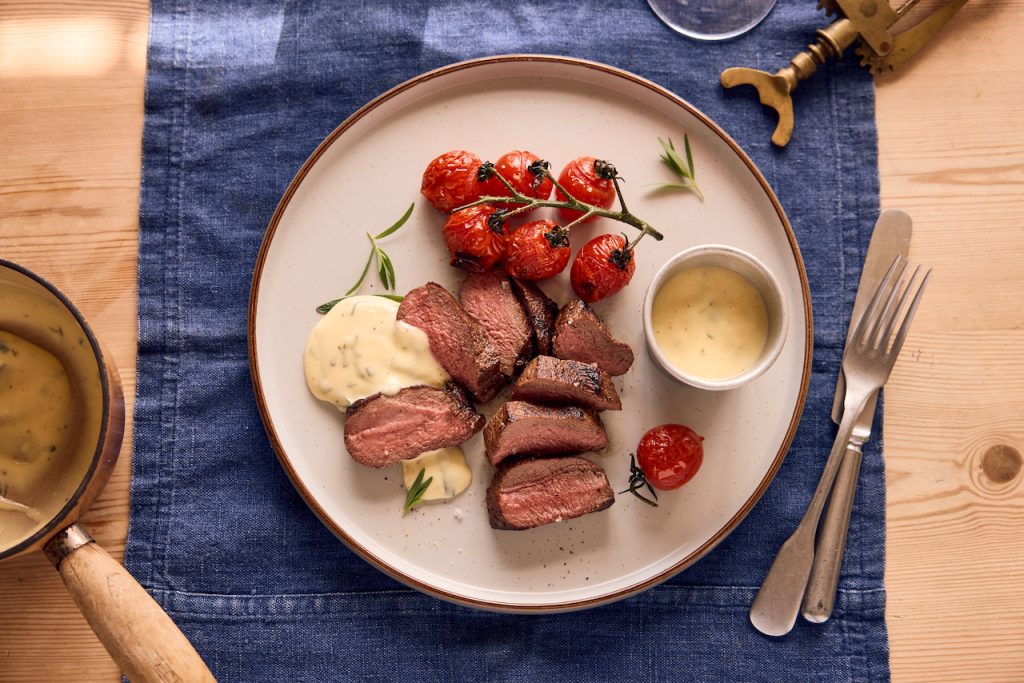
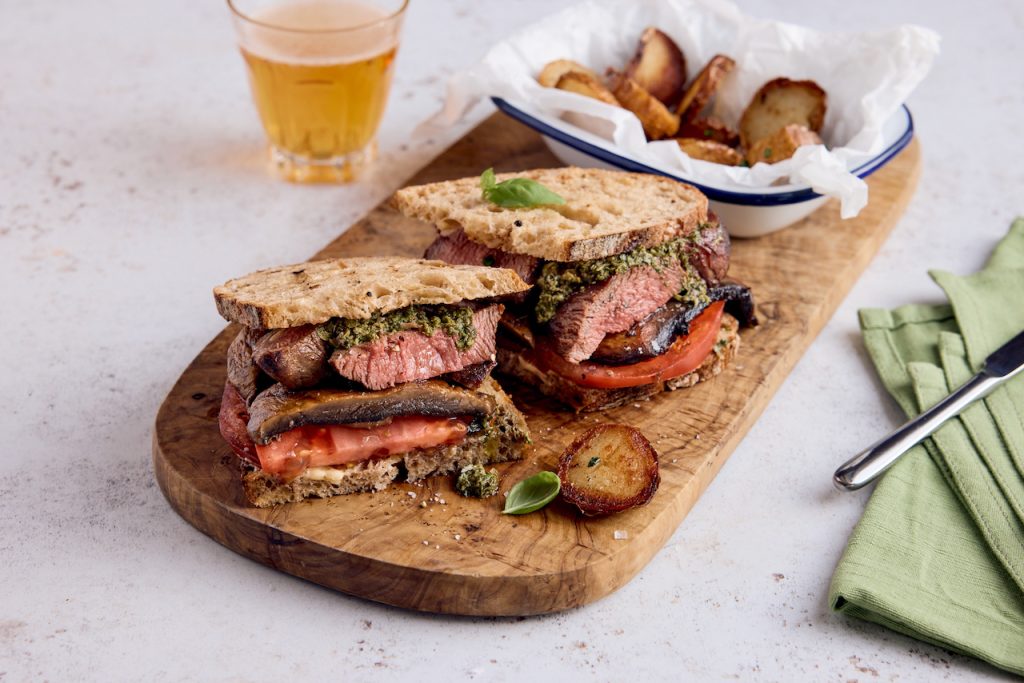
Allow the steak to rest for as long as you cooked it for – this resting is as much about allowing the heat to move through the meat evenly as it is about the steak ‘relaxing’ after its stressful ordeal. If you end up resting your steaks for so long that they go a bit too cool – no drama. A minute or two in a hot oven will bring them back without increasing how cooked they are by any serious degree.

